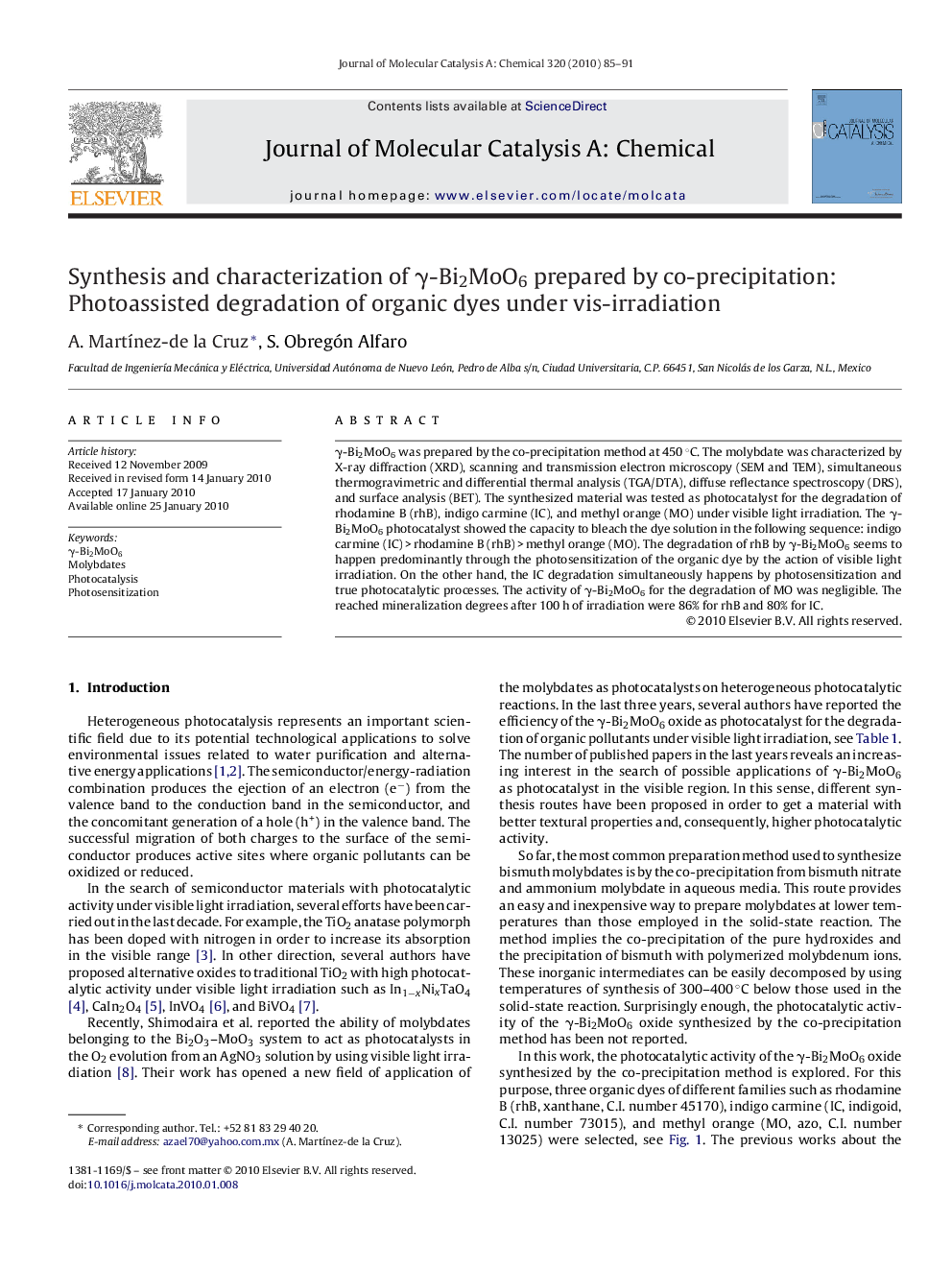| Article ID | Journal | Published Year | Pages | File Type |
|---|---|---|---|---|
| 66843 | Journal of Molecular Catalysis A: Chemical | 2010 | 7 Pages |
γ-Bi2MoO6 was prepared by the co-precipitation method at 450 °C. The molybdate was characterized by X-ray diffraction (XRD), scanning and transmission electron microscopy (SEM and TEM), simultaneous thermogravimetric and differential thermal analysis (TGA/DTA), diffuse reflectance spectroscopy (DRS), and surface analysis (BET). The synthesized material was tested as photocatalyst for the degradation of rhodamine B (rhB), indigo carmine (IC), and methyl orange (MO) under visible light irradiation. The γ-Bi2MoO6 photocatalyst showed the capacity to bleach the dye solution in the following sequence: indigo carmine (IC) > rhodamine B (rhB) > methyl orange (MO). The degradation of rhB by γ-Bi2MoO6 seems to happen predominantly through the photosensitization of the organic dye by the action of visible light irradiation. On the other hand, the IC degradation simultaneously happens by photosensitization and true photocatalytic processes. The activity of γ-Bi2MoO6 for the degradation of MO was negligible. The reached mineralization degrees after 100 h of irradiation were 86% for rhB and 80% for IC.
Graphical abstractThe analysis of total organic content of the samples irradiated at different times showed that the mineralization of rhodamine B and indigo carmine by a γ-Bi2MoO6 photocatalyst is feasible.Figure optionsDownload full-size imageDownload high-quality image (113 K)Download as PowerPoint slide
